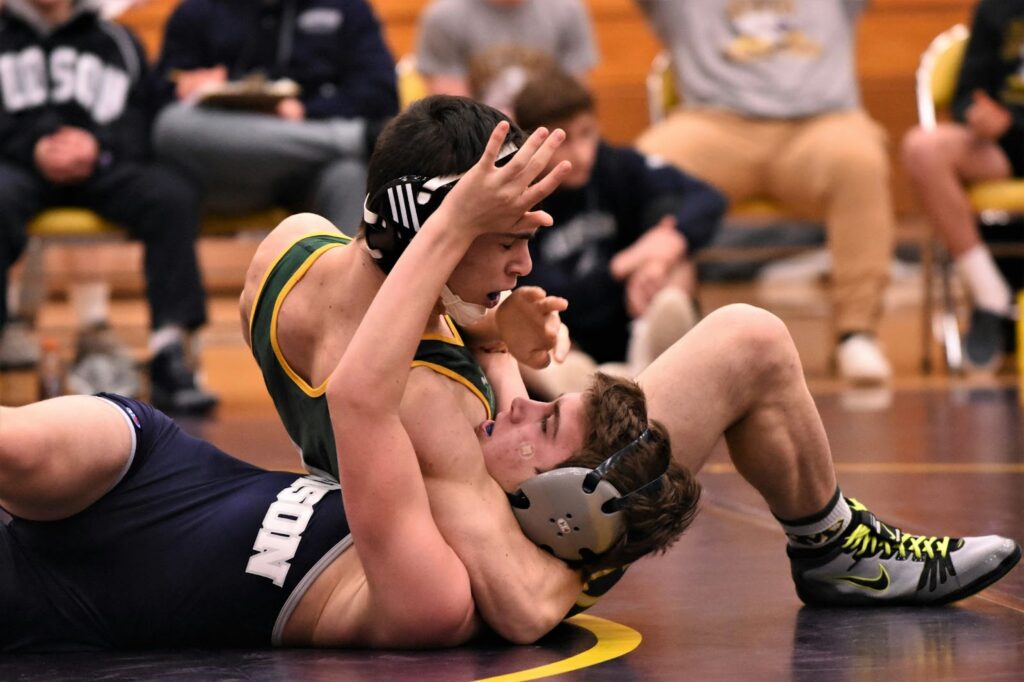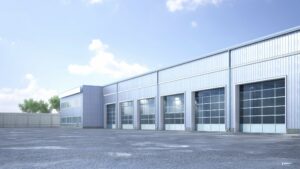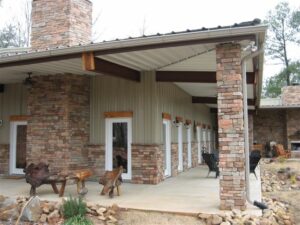Indoor sports complexes are versatile spaces that offer a wide range of athletic activities and recreational opportunities by design. As of 2023, there were 11,032 Indoor Sports Facilities Management businesses in the US, an increase of 1.1% from 2022. (IBISWorld)
Whether you’re a sports enthusiast, a business owner looking to attract customers, or a community organization aiming to promote active lifestyles, building an indoor sports complex can be a rewarding endeavor.
In this guide, we will explore the basics of indoor sports complexes, discuss the importance of these facilities, provide insights into the planning and design process, and offer guidance on equipping your complex.
Table of Contents:
Understanding the Basics of Indoor Sports Complexes
Indoor sports complexes, aka recreational buildings, are enclosed structures specifically designed to accommodate various sporting activities. These complexes often house multiple courts or fields, allowing for simultaneous games and tournaments.
One of the fundamental advantages of indoor sports complexes is the ability to provide a controlled environment, shielding athletes and spectators from adverse weather conditions.
The enclosed nature of these facilities also allows for year-round usage, making them an attractive option for individuals and organizations seeking consistent access to sporting facilities regardless of the season. Additionally, indoor sports complexes often offer amenities such as locker rooms, concessions, and spectator seating, further enhancing the overall experience.
The Importance of Indoor Sports Complexes
Indoor sports complexes play a crucial role in promoting an active lifestyle and fostering community engagement. These facilities provide a safe and comfortable environment for individuals of all ages and skill levels to participate in a variety of sports, ranging from basketball and volleyball to soccer and tennis.
From a community standpoint, indoor sports complexes serve as hubs for athletic events, tournaments, and leagues, fostering a sense of camaraderie among participants and spectators alike. These complexes can also have a positive economic impact by attracting visitors, generating revenue for local businesses, and boosting tourism.
Types of Indoor Sports Complexes
There are various types of indoor sports complexes, each catering to different sports and activities. Some common types include:
-
- Multi-Sport Complexes: These complexes are designed to accommodate a range of sports, allowing for flexibility and versatility in programming. It is worth noting that there has been a rise in large, multi-sport complexes accommodating various activities (basketball, volleyball, soccer, etc.) under one roof.
-
- Tennis and Racquetball Complexes: These complexes provide dedicated spaces for tennis, racquetball, squash, and other racquet sports.
-
- Ice Rinks: Ice rinks are specialized complexes designed for ice hockey, figure skating, and recreational ice skating.
-
- Swimming and Aquatic Centers: These complexes feature swimming pools, diving boards, and other aquatic amenities.
Choosing the right type of indoor sports complex depends on factors such as the target audience, community needs, and available resources.
Benefits of Indoor Sports Complexes
Indoor sports complexes offer numerous benefits that contribute to the overall well-being of individuals and communities. These complexes provide a safe and controlled environment for athletes to practice and compete, reducing the risk of injuries caused by adverse weather conditions or uneven playing surfaces.
Furthermore, indoor sports complexes encourage physical activity and promote a healthy lifestyle. With a wide range of sports and activities available, individuals of all ages and skill levels can find something that suits their interests and abilities. This inclusivity fosters a sense of belonging and encourages people to stay active and engaged in their community.
Indoor sports complexes also serve as gathering places for families and friends, providing opportunities for social interaction and bonding. Whether it’s cheering on a loved one during a game or participating in a recreational league together, these complexes create lasting memories and strengthen relationships.
Lastly, indoor sports complexes have a positive economic impact on the surrounding community. By attracting visitors from near and far, these facilities contribute to the local economy by generating revenue for businesses such as hotels, restaurants, and retail stores. Additionally, hosting tournaments and events can boost tourism, showcasing the community’s amenities and attracting even more visitors.
Did You Know?
California, Texas, and Florida have the highest number of indoor sports facility management businesses in the US, with 5,128, 2,976, and 2,641 establishments, respectively.
Indoor sports complexes are more than just enclosed structures for sporting activities. They play a vital role in promoting physical fitness, fostering community engagement, and boosting the local economy. With their versatility, amenities, and year-round accessibility, these complexes provide a space where individuals can come together, stay active, and create lasting memories.
Planning Your Indoor Sports Complex
Before embarking on the construction of an indoor sports complex, careful planning is essential to ensure its success. Consider the following key aspects:
Identifying Your Target Audience
Understanding the needs and preferences of your target audience is crucial in designing a sports complex that meets their expectations.
Whether your focus is on young athletes, adult leagues, or family-oriented recreation, tailoring the facility to cater to their specific requirements will contribute to long-term viability and community satisfaction.
Notably, youth sports participation is driving demand for these facilities. As of 2019, more than $550 million had been spent on developing sports facilities designed specifically to host youth sports tournaments, including more than $161 million on projects that were under construction.
Choosing the Right Location
The location of your indoor sports complex is a critical factor that can significantly influence its success. Consider factors such as accessibility, proximity to schools and residential areas, and parking availability.
Conducting thorough market research can help identify underserved areas or gaps in the local sports infrastructure.
Determining the Size and Layout
The size and layout of your indoor sports complex should be determined by the intended usage and the number of sports and activities you plan to accommodate. Consult with architects and designers who specialize in sports complex construction to optimize the flow of the facility, ensuring efficient utilization of space while prioritizing safety and comfort.
Pro Tip:
Clear span construction – a distinctive feature that comes with using steel as a framing material – allows for the creation of spaces over 350 feet wide without any support. Additionally, by incorporating support columns in the center of the building (known as multiple span), it can be extended out on either side for a building over 500 feet in width.
Moreover, when considering the size of the indoor sports complex, it’s essential to factor in potential future growth and expansion. Designing the facility with scalability in mind can help accommodate increasing demand and new sports programs as your business grows. Additionally, incorporating versatile spaces that can be easily adapted for different activities or events can enhance the facility’s flexibility and appeal to a wider range of users.
Creating a Sustainable Environment
Building an indoor sports complex with sustainability in mind not only benefits the environment but also can lead to cost savings in the long run. Utilizing energy-efficient lighting, heating, and cooling systems, as well as incorporating eco-friendly materials in construction, can reduce operational expenses and minimize the facility’s carbon footprint.
Consider implementing recycling programs and water-conservation measures to promote environmental stewardship within the sports complex.

Designing Your Indoor Sports Complex
Designing an indoor sports complex involves considering various factors to create a functional and visually appealing space. Here are some essential features to consider.
Beyond the basics, think about incorporating innovative technologies like digital scoreboards, player-tracking systems, and virtual training simulations to elevate the overall experience for athletes and fans alike. By embracing cutting-edge solutions, you can create a dynamic environment that caters to the evolving needs of the sports industry.
Essential Features of a Sports Complex
When designing your complex, incorporate features such as high-quality playing surfaces, proper lighting, and well-ventilated spaces. Ample storage areas for equipment, well-designed spectator seating, and versatile layouts that allow for easy reconfiguration are also important considerations to enhance the overall experience for athletes and spectators.
Additionally, consider integrating sustainable practices into your design, such as energy-efficient lighting, water-saving fixtures, and eco-friendly building materials. By prioritizing sustainability, you not only reduce operational costs in the long run but also demonstrate a commitment to environmental stewardship, appealing to eco-conscious athletes and patrons.
Incorporating Accessibility and Safety Measures
Make sure to include accessible facilities, such as ramps and elevators, to ensure equal participation for individuals with disabilities. Furthermore, prioritize safety by incorporating measures such as first-aid stations, emergency exits, and clear signage to help prevent accidents and respond quickly in case of emergencies. Consult local building codes and regulations to ensure compliance.
Moreover, consider implementing advanced security systems, such as surveillance cameras and access control systems, to safeguard both the premises and the individuals using the sports complex. By integrating state-of-the-art security measures, you create a secure environment that instills confidence in athletes, spectators, and staff, fostering a sense of trust and well-being within your facility.
Construction Process of an Indoor Sports Complex
Constructing an indoor sports complex requires a coordinated approach involving various stakeholders. Consider the following during the construction phase:
Building an indoor sports complex is a multifaceted project that demands attention to detail and careful planning. From the initial design concept to the final touches of construction, every step plays a crucial role in creating a functional and visually appealing space for athletes and sports enthusiasts.
Hiring the Right Construction Team
Engaging experienced professionals who specialize in sports complex construction is crucial. Consider factors such as their track record, reputation, and ability to adhere to project timelines and budgets. Collaborate closely with the construction team to ensure that the design vision is executed successfully.
When selecting the construction team for an indoor sports complex, it’s essential to look for individuals or firms with a proven track record in similar projects. Their expertise in handling the unique requirements of sports facilities can make a significant difference in the overall quality and functionality of the complex. Moreover, a team that understands the specific needs of athletes and sports programs can tailor the construction process to optimize performance and user experience.
Overseeing the Construction Phase
During the construction phase, it’s important to maintain regular communication with the construction team. Periodic site visits and progress meetings can help address any potential issues promptly. Additionally, closely monitor the budget and timeline to ensure the project stays on track.
Effective oversight of the construction phase involves more than just monitoring progress; it also entails fostering a collaborative environment where all parties work toward a common goal. By encouraging open communication and transparency, potential challenges can be identified and resolved swiftly, minimizing delays and cost overruns. Regular quality checks and adherence to industry standards are essential to guarantee the safety and longevity of these buildings.
Equipping Your Indoor Sports Complex
Equipping your sports complex with the right equipment is essential to provide a safe and enjoyable experience for athletes and participants. Consider the following:
Selecting the Right Sports Equipment
Invest in high-quality sports equipment that is suitable for the specific sports and activities offered in your complex. Consider factors such as durability, safety features, and maintenance requirements. Engage with suppliers who have a proven track record in providing reliable sports equipment.
Ensuring Adequate Seating and Amenities
Provide comfortable seating for spectators, incorporating features such as tiered seating or individual seating with proper sightlines. Additionally, consider amenities such as locker rooms, vending areas, and restrooms to enhance the overall experience for participants and spectators.

What’s Next?
Building an indoor sports complex is an exciting endeavor that requires careful planning, thoughtful design, and strategic execution. By understanding the basics of indoor sports complexes, recognizing their importance, and following a systematic approach to planning, designing, and equipping your recreational facility, you can create a space that promotes an active lifestyle, fosters community engagement, and provides a rewarding experience for athletes and spectators alike.
Need Expert Assistance?
SteelCo has been designing, constructing, and delivering steel-framed recreational buildings for over 20 years. We dropship PEMB materials nationwide and offer steel erection and construction services in the Southeast United States. We have the experience and expertise you need to ensure that you not only receive the building you want but design it to meet your highest needs and/or expectations. Learn more about our services.
























